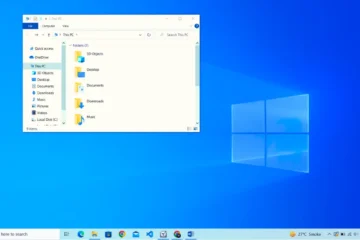Windows 11 is the latest version of the popular operating system from Microsoft, and it comes with a variety of new features and improvements. One of the most important tools for maintaining the health of your Windows 11 system is the “System Health” feature, which allows you to monitor various aspects of your system and troubleshoot any issues that may arise.
In this article, we will take a look at some of the things you can check in the System Health of Windows 11 to keep your system running smoothly. From checking the performance of your hardware to monitoring the status of your software, we will explore the many ways in which you can use the System Health feature to optimize your Windows 11 experience.
What can you check in the System Health of Windows 11?
The System Health Index (SHI) in Windows 11 is a powerful feature that allows users to monitor and optimize the performance of their system. With SHI, users can easily check a variety of system metrics such as CPU usage, memory usage, disk usage, and network usage.
Additionally, users can view detailed information about each individual component of the system, including the status of updates and security features.
This allows users to quickly identify any potential performance bottlenecks and take steps to resolve them. The SHI also provides recommendations on how to improve the system’s performance, such as disabling unnecessary services or freeing up disk space. Overall, the System Health feature in Windows 11 is a valuable tool for keeping your system running smoothly and maximizing its performance.
1. What is the System Health of Windows 11?
When you run the Windows 11, you can check the Windows System Health. You can check the Windows System Health via the Settings app, where you will see the System. It will give you a brief overview of your system, and the most important piece of information is the health of your system. If the health of your system is good, it means that your system is working properly.
If the health of your system is poor, it means that there is a problem with your system and you will need to fix it. You can check the Windows System Health via the Settings app, and then click on the System. This will give you a brief overview of your system, and the most important piece of information is the health of your system.
2. What does it do?
Windows has a system health feature that not only helps you troubleshoot issues with your PC, but gives you a detailed look into how your PC is working. The system health assesses your PC’s performance, reliability and security, and the more you use Windows, the better it gets at identifying issues, and then fixing them.
3. What does it check?
Windows provides a very useful tool to check the health of your computer, and it’s called the System Health Report. To launch the health report, click the Start button and type “report” into the search box. The search results will show “Report” in the list. Click it once to launch the tool. When the tool launches, it will start scanning your computer and then present you with a report that tells you what your computer is doing.
The report will scan various system components, like the Windows Registry, device drivers, your computer’s memory, and more. The report will also recommend actions that you can take to fix any problems that it finds. For example, if it finds that a device driver isn’t working correctly, it will recommend that you update that driver. The report will also tell you what programs and services are currently running on your computer.
4. Benefits of the System Health Index.
The System Health Index (SHI) is a feature in Windows 11 that helps users monitor and optimize the overall performance of their system. One of the main benefits of SHI is that it provides a single, easy-to-understand score that represents the overall health of the system. This score takes into account various factors such as CPU usage, memory usage, disk usage, and network usage.
By monitoring this score, users can quickly identify any potential performance bottlenecks and take steps to resolve them.
Additionally, SHI also provides detailed information about each individual component of the system, allowing users to drill down and troubleshoot specific issues. Overall, the SHI feature in Windows 11 is a valuable tool for keeping a system running smoothly and maximizing its performance.
5. What does the System Health Index tell you?
The System Health Index (SHI) in Windows 11 is a feature that provides a single, easy-to-understand score that represents the overall health of a system. This score takes into account various factors such as CPU usage, memory usage, disk usage, and network usage. By monitoring this score, users can quickly identify any potential performance bottlenecks and take steps to resolve them.
In addition to providing an overall score, the SHI also provides detailed information about each individual component of the system. For example, it can show the percentage of CPU usage, the amount of free and used memory, the amount of free and used disk space, and the status of network connections. This allows users to drill down and troubleshoot specific issues that may be affecting the system’s performance.
Additionally, the SHI provides recommendations on how to improve the system’s performance, such as disabling unnecessary services or freeing up disk space. This feature is designed to be user-friendly and easy to understand, making it accessible to users of all levels of technical expertise.
Overall, the System Health Index feature in Windows 11 is a valuable tool for keeping your system running smoothly and maximizing its performance.
Conclusion
The System Health Index provides you with detailed analytics of your runs, errors and performance.



